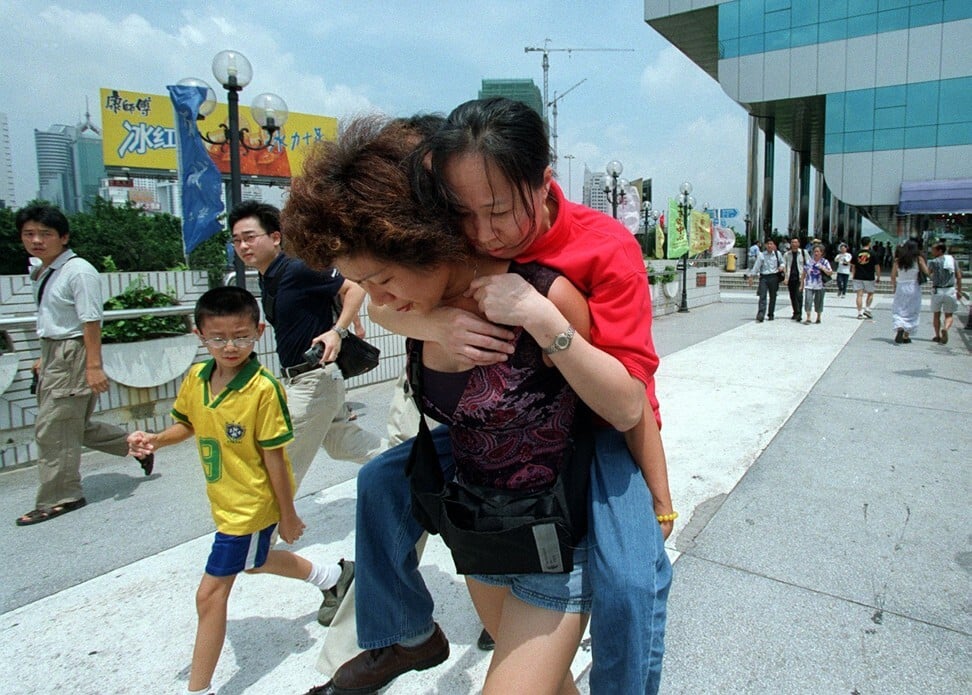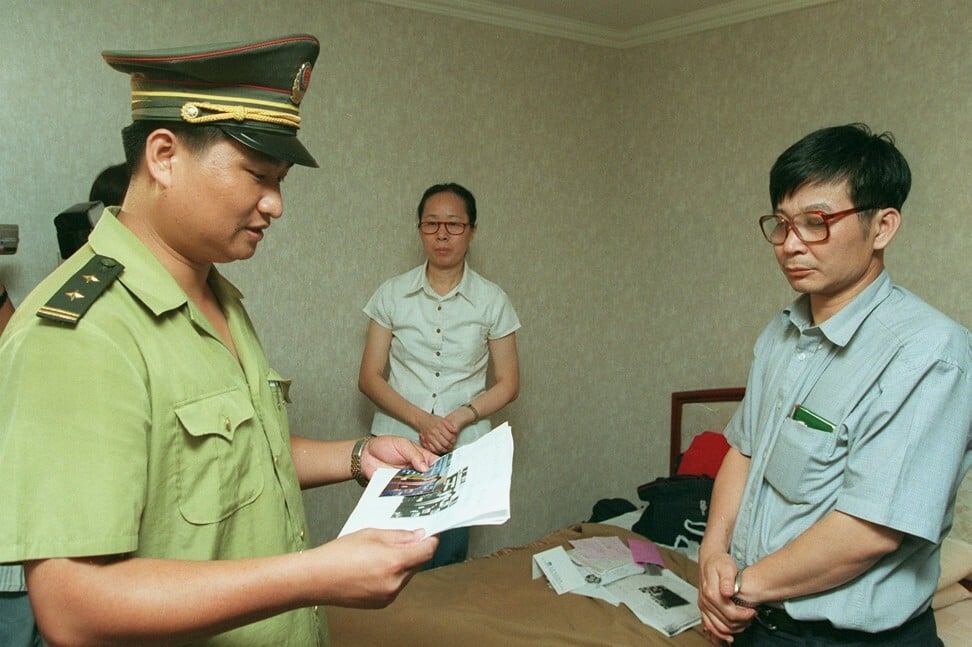
He went missing as a child in China 20 years ago: remembering the tragic tale of Yu Man-hon
- Mentally disabled Hong Kong boy Yu Man-hon was 15 when he disappeared at the Hong Kong-Shenzhen border on August 24, 2000
- A 20-minute film, Unfinished Return of Yu Man-hon, inspired by the case is screening in Hong Kong this summer
It has been 20 years this month since Yu Man-hon ran away from his mother and into the headlines. Physically, he was aged 15; mentally, the doctors said, he was about two.
He was strong enough to leap off the MTR train just as the doors were closing at Yau Ma Tei station on Hong Kong’s Kowloon peninsula and, somehow, make his way to the Lo Wu crossing to mainland China 25km (16 miles) away. What he couldn’t understand was the concept of borders.
It must have been a sleepy Thursday afternoon at the frontier because he managed to dart across the bridge before China’s authorities grabbed him and returned him to Hong Kong. But the city’s immigration officials, having watched him cry unintelligibly, wet himself and throw food around, and having also assessed the low quality of his clothing, decided he was an illegal immigrant from the mainland. So he was sent back across the dividing line and from that day – August 24, 2000 – to now, he has not been seen again.
It wasn’t the first time Man-hon had been mistaken for an illegal immigrant. I wrote several stories for the Post on his disappearance and his mother, Yu Lai Wai-ling, told me that one time he ran away, police found him in Ma On Shan after residents complained there was an illegal immigrant hiding in the bushes.

On that occasion, Man-hon was taken to a hospital until his parents reclaimed him. He lived, with a younger brother, in a housing estate in Lok Fu. In his bedroom, a large poster of Hong Kong Island hid his scribbles on the wall. After he vanished, a fish tank was installed on the advice of a feng shui expert, as if it might somehow induce him to swim home. In the coming years, many psychics would offer their expensive services, with zero success.
In the sitting room, a fax machine spewed out information about possible sightings. Man-hon’s father, a Housing Authority caretaker, was in poor health, so it was his mother who travelled backwards and forwards. She based herself in the Railway Station Hotel in Shenzhen, just across the border from Lo Wu. She handed out thousands of black-and-white copies of his photograph with her phone number attached. In February 2001, I stayed there too for a few days, to write about her search.

In her room, she’d pinned up a map of China. The scale meant a geographic speck could turn out to be a city of millions. At night, the plaintive hoot of the trains could be heard below, setting out across the vast nation. Everything across the border was bigger, faster, harsher. The phone rang constantly; voices demanded rewards or ransoms.
Strangers sent her letters and photos of other lost children who might be, but weren’t, Man-hon. There was a naked wolf child scrabbling in a gutter. There was a grinning, vacant child propped against a stained wall by an adult hand. And, in a Public Security Bureau station, there was a boy, crouched in a corner: filthy, speechless, clutching a piece of coconut, who would be thrown back on the street five minutes later because he wasn’t Man-hon.
In the new China, money could buy anything – even a snatched child. You’d often see posters in the streets, as if for lost pets; the local papers carried columns of missing-children ads
People in Guangdong province, on the other side of the map’s dotted line from Hong Kong, were puzzled. Why was this mentally incapable teenager getting so much attention? In China, children disappeared all the time and the authorities did nothing. Why was this one important?

I was guilty of being partisan, too. In 1998, I’d interviewed some Shenzhen parents whose children had gone missing. In the new China, money could buy anything – even a snatched child. You’d often see posters in the streets, as if for lost pets; the local papers carried columns of missing-children ads.
In Baishizhou, one of Shenzhen’s urban villages, a woman had told me about her stolen boy. To my shame, I can no longer remember her face or his name. Those stories have blurred. The faxes I’ve kept from that time have almost faded to blanks. Yet, two decades later, the loss of Man-hon remains pin-sharp vivid.
During those February 2001 days in Guangdong, the Asian cuckoo cried constantly. Every spring since, when I hear it, I think: where is Man-hon? Last January, I was in Baishizhou again. It was about to disappear itself, to be replaced by something bigger, glossier, higher. At the Lo Wu crossing, Man-hon, still 15, still invisible, still loitered at the bridge.


I’ve always wondered if part of his terrible misfortune was timing. As it happened, August 2000 was also the month the right-of-abode issue took a fatal turn. In 1999, Hong Kong’s Court of Final Appeal had granted right of abode to children who had been born in the mainland but had a Hong Kong resident parent. The Hong Kong government wasn’t pleased at the thought of a mass influx and it turned to Beijing for an “interpretation”.
Technically, none of this applied to Man-hon, who was Hong-Kong born of a Hong Kong father. But when, 13 days later, he couldn’t produce his ID card at Lo Wu – his mother kept it in her bag – it was amid a bitter, darkened atmosphere. Maybe that’s why his right to any abode was denied. Who knows?


The mainlanders came anyway. In 2003, after the severe acute respiratory syndrome (Sars) outbreak, when Hong Kong had no tourists, the rules were relaxed. One of the arrivals that year was a Beijing girl called Cici Wu, aged 14, whose parents moved to Hong Kong. She knew nothing about Man-hon until a Hong Kong boyfriend told her the story in 2011, while they were in Beijing.
“I think he brought it up because he was new in Beijing and maybe some cultural phenomenon reminded him of Yu Man-hon,” Wu, now an artist living in New York, says in a Zoom call. He told her that, when it first happened, students at his Hong Kong school found it funny. “But after he grew up, sympathy came, and political imagination, and he saw it was an important case.”
Eventually, Man-hon became the inspiration for her first solo show in Hong Kong last year at – appropriately – Empty Gallery. It featured a 20-minute film called Unfinished Return of Yu Man-hon, which the Asia Society is screening this summer. It was shot in Hong Kong and the US city of Minneapolis, which is where Taiwanese actor Jonathan Chang lives, who plays a wraith-like, older Man-hon returning to places that once mattered to him. (Chang was the young actor who played Yang-yang in A One and A Two (Yi Yi), a critically acclaimed Taiwanese film that’s also marking its 20th anniversary.)
Before filming, Wu met Man-hon’s mother in Lok Fu. “A lot of the scenes were suggested by her in very indirect, subtle ways. She met Jonathan Chang and she liked that he was playing her son.”

Yu Lai Wai-ling has not seen the highly stylised result, about the fragility of memory. The Minnesota snow, in the jump-cuts, might puzzle her. “It was symbolic of a different reality, something cold, something frozen,” Wu explains.
Screenings are followed by readings from the transcript of a conversation between Wu and Professor Carole A.G. Jones, author of Lost in China? Law, Culture and Identity in Post-1997 Hong Kong, which featured Man-hon’s case. At one point, Jones states: “Mrs Yu could be an emblem for the [recent anti-government] protesters. What happened to her son seems to be happening to Hong Kong. It’s disappearing.”
That’s the big-scale metaphor. Or it’s a speck: one boy and one enduring human tragedy. Yu Lai Wai-ling didn’t want to be interviewed again because it’s “too painful”.

Unfinished Return of Yu Man-hon by Cici Wu will be screened on August 27 and September 24 at the Asia Society’s Miller Theatre at 7pm. Free admission. Register at asiasociety.org/hong-kong
